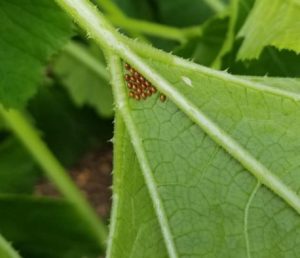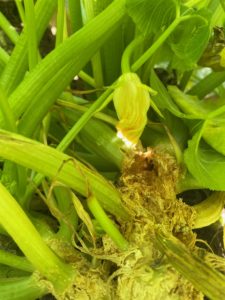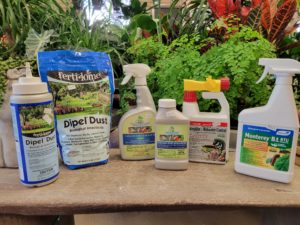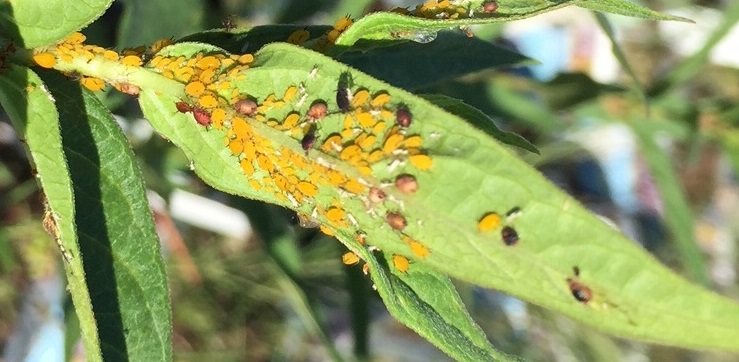I don’t know about you, but I consider squash vine borers one of my garden’s worst enemies! Just when my squash vines are beginning to produce well, they suddenly go limp and die!
Luckily, there IS something we can do to prevent or minimize the damage from this pesky insect. Understanding the life cycle of any pest is key to its management.

The squash vine borer adult is a small wasp-like “clear-wing” moth with a reddish-orange abdomen. The adult moths emerge from their pupating stage in the soil in late spring, coinciding with the emergence of squash seedlings.

The adult moths will lay their eggs on the tender stems and shaded parts of the baby squash plants. The eggs will hatch in about a week and the larvae begin boring into the stem on the bottom three inches of the stem. The larvae will stay in the stem of the plant for about six weeks. That is just about the time your squash plants are producing flowers and fruit.

If your vines suddenly wilt, then you probably have squash vine borers. Inspect the stems daily for sawdust-like material called frass-worm droppings mixed with some plant matter. Also look for the eggs which have been deposited on the stems and destroy them!
Prevention is the best remedy for squash vine borers. Now that you know their life cycle, you can prepare by covering the plants with row cover to exclude the egg-laying moth as the young plants develop. Since squash are normally bee-pollinated, and the row cover excludes the bees, you will have to take the place of the bee. Find an open male flower (they have the anthers with pollen on them), and dab it onto the female bloom with the pistil. One male bloom will pollinate five to eight female blooms. A cotton swab or small paint brush may also be used, and should occur before 10am for maximum success. Each flower is open for only one day, so daily pollination is recommended.

Bt (Bacillus thurengiensis) sprays may be used as a preventative. Begin sprays weekly after plants start to bloom. Bt may also be applied as a dust. Bt powder, known as Dipel, should be applied to the stems every three days or after rain or irrigation. Spinosad may be sprayed weekly for four weeks during adult moth activity. Use Spinosad in the evenings to avoid contacting honey bees with the spray. Begin when plants first start to bloom.
If you missed the preventative and find yourself with squash borer larvae in your squash stems, you can still take control by cutting them out with a sharp knife. Slit the stem lengthwise and pull them out. Your chickens will love them! Pile soil on the cut portion of the stem to encourage new roots to grow. You can also pile soil every 2 feet or so on the stems as they grow. This will encourage rooting at places on the stem, so that if the borer gets in the stem the plant may still have a chance to grow.
This is one pest that careful watching can do wonders in extending the length of your squash harvest! Interesting note: Acorn squash, known as a winter squash because it stores well into the winter, has solid stems and is not usually affected by squash vine borers.




